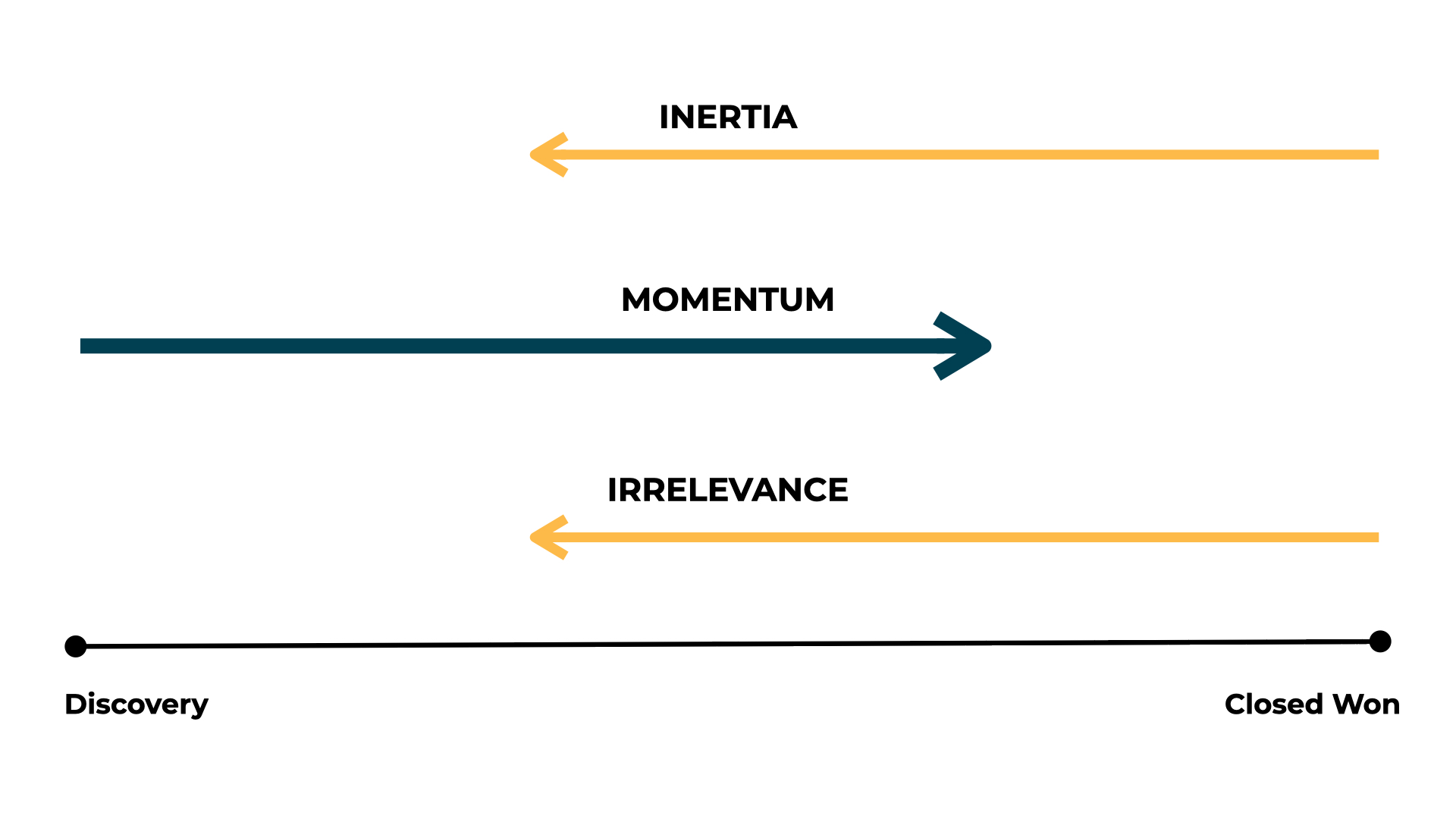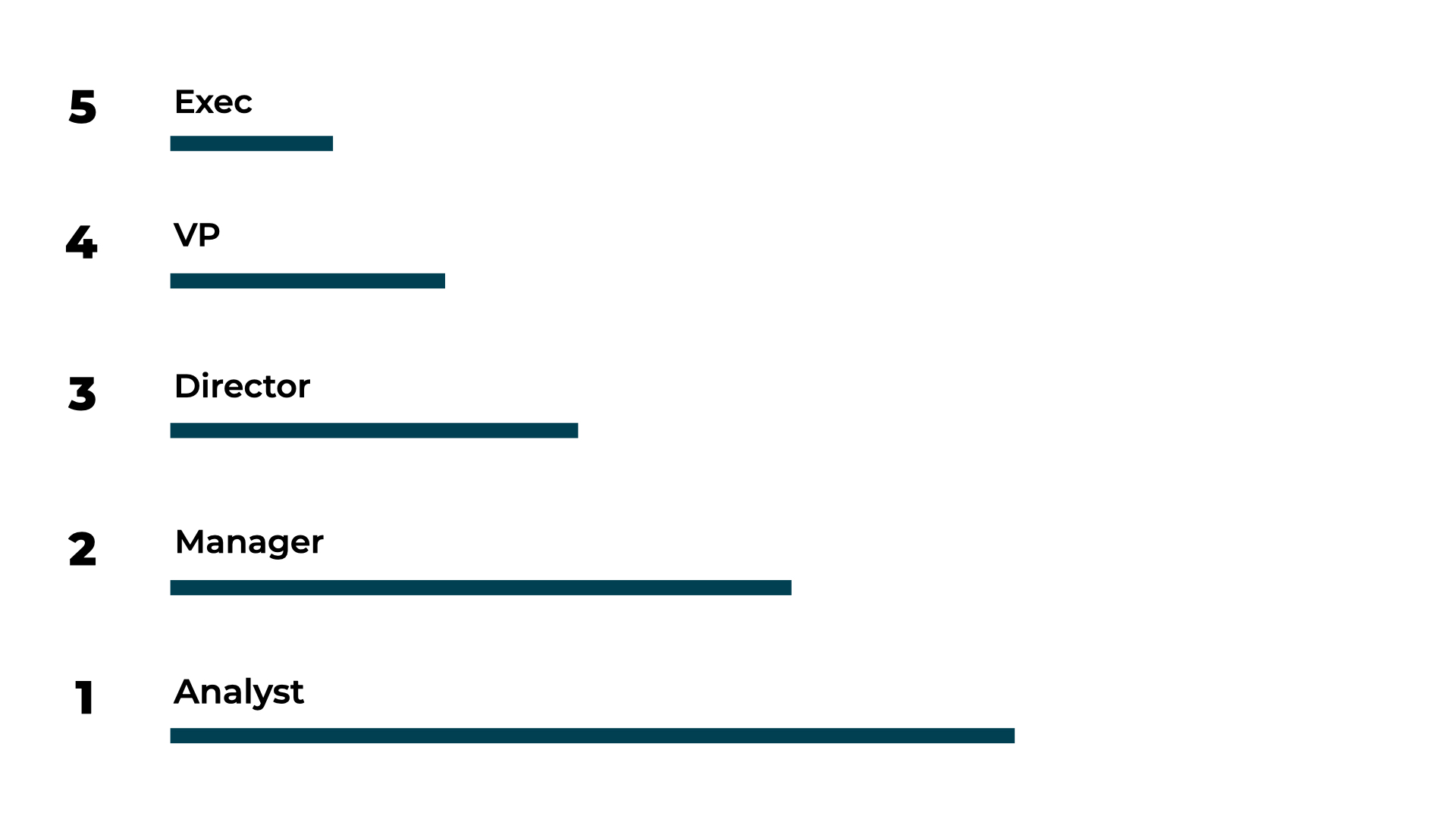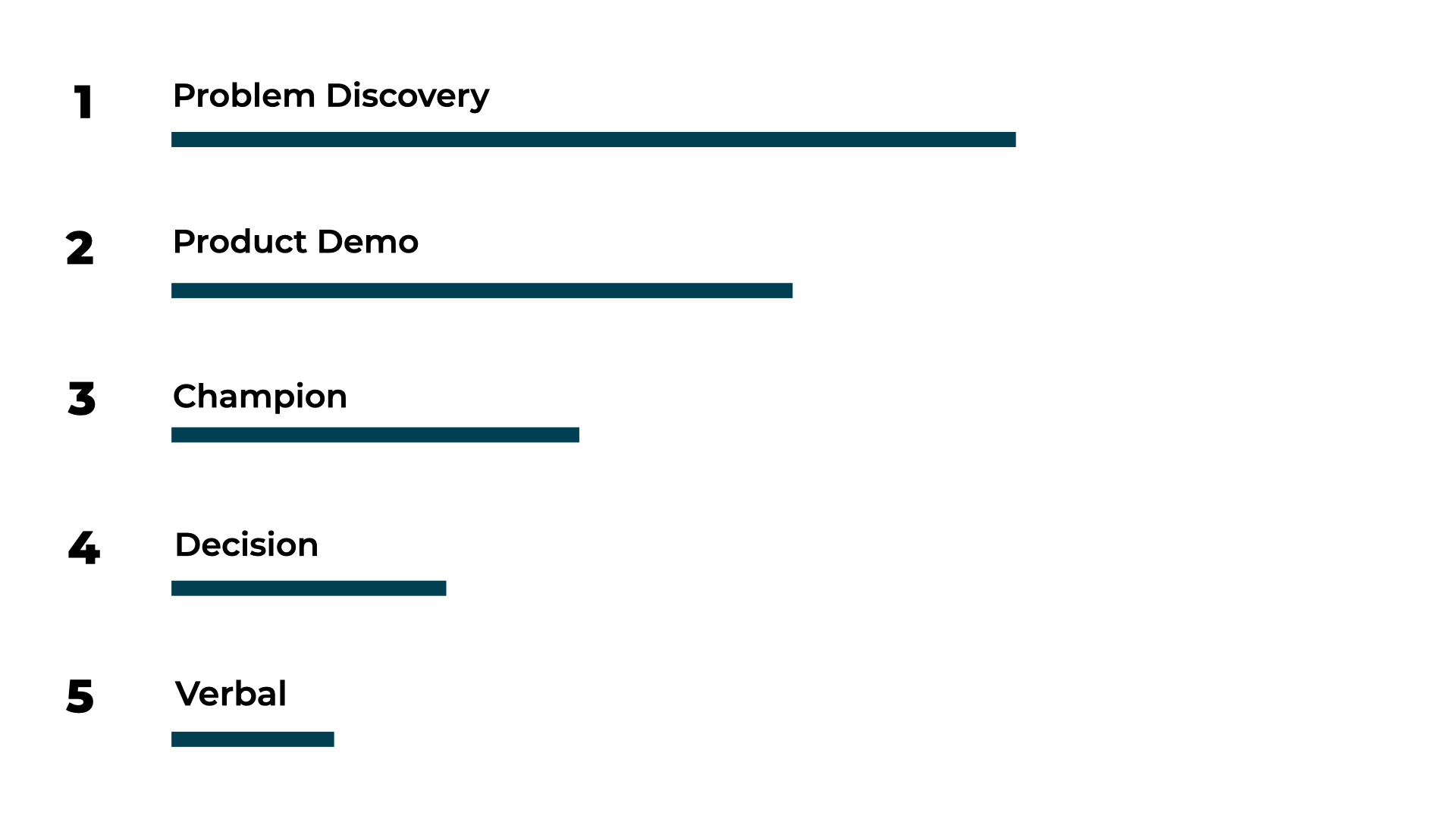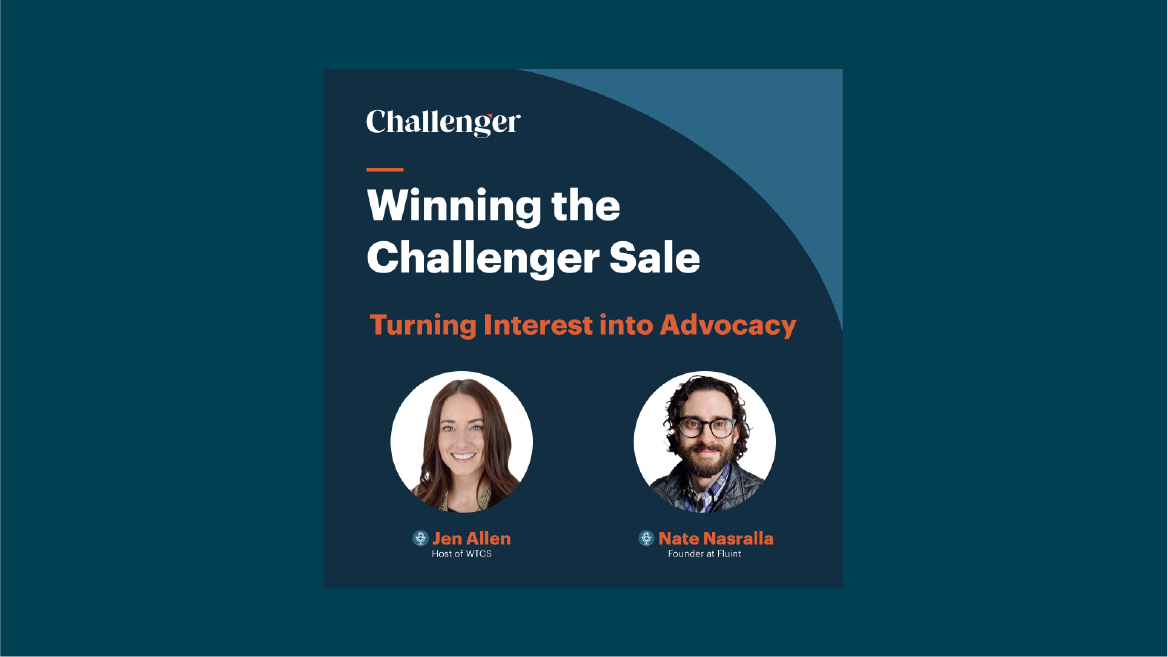Measuring Deal Momentum, the Formula for Enterprise Sales


It’s been said “time kills all deals.” It’s true of a transactional sale.
But in the context of a complex sale, time isn’t always the enemy.
In fact, the larger the contract, the longer the sales cycle tends to be. It takes time to evaluate and execute a strategic deal, with the power to shape an enterprise team’s work.
Instead, inertia and irrelevance are the headwinds that cause large deals to stand still:
- Inertia: the tendency for enterprises to do nothing, and maintain the status quo.
- Irrelevance: de-prioritizing one opportunity to pursue another, unrelated project.
To keep your deal moving forward despite these forces, you need to create deal momentum.

The Formula for Deal Momentum
Momentum is always a product of two factors, mass and velocity.

Mass in a B2B setting describes the decision making weight a contact brings to a deal.
Power consolidates at the top of the corporate structure. Generally speaking, the higher a contact sits in the hierarchy, the more decision making weight they’ll carry.
To keep things simple, let’s say the “mass” of a contact increases by one point with each level.

Velocity references the speed and direction with which your deal is developing.
In a high-velocity deal, buyers engage in a greater number of conversations and move further down the funnel in less time.
Again, to keep this simple, let’s assign one point for each pipeline stage the deal advances.
Now, let’s put these factors together inside the formula for Deal Momentum.

How to Measure an Enterprise Deal’s Momentum
When best applied, this concept is more of a mental framework than a mathematic formula. The point is to help you break complex deals down into a smaller set of factors you can identify and influence.
For example, a VP of Engineering may carry more decision-making weight in your deals than a VP of Operations. So you’d adjust the formula, and focus on selling into engineering early in the sales cycle.
Let’s look at the momentum created in three example opportunities:

Compare the first and third deal. While a higher-level contact is engaged in the third opportunity, the deal hasn’t advanced as far down the pipeline, and it’s taken more time to get there.
If you look at the second deal, it’s pretty clear this opportunity has the most momentum of the three.
But now, what if you’re comparing two deals in the exact same pipeline stage?
That’s where this formula become most valuable.
It allows you to consider all four factors of the formula together, to identify which deal is picking up steam — and which is at risk of standing still — even when they look similar inside your CRM.
Four Drivers of Deal Momentum
Behind each ingredient of this formula are principles that develop larger deals, and higher close rates.
- Expanded Reach.
Involving executives and key employees early drives more deal momentum than interactions at the bottom of the organizational chart. - Effective Follow-Up.
Activities by a seller aren’t factored into momentum — only activities that buyers participate in. This puts a spotlight on effective follow-up that buyers reply to. - Showing Commitment.
Interactions become more valuable in the late stages of a deal, as the buying team grows increasingly committed to seeing the deal through. - Shorter Cycles.
Making more time to engage with a sales rep, over a shorter period of time, demonstrates that solving a certain problem is a priority that matters.
The question, then, is how do you manage each driver? If you see a deal slowing down, how do you create more momentum?
Creating Momentum to Keep Deals Moving
You’ve got the formula, and you understand its drivers. Now, here’s a shortlist of activities to focus on, to keep your enterprise-level deals moving forward:
- Invest in deep discovery that creates compelling problem statements.
- Make creating and testing champions a regular practice for every deal.
- Send your champions forwardable emails that appeal to executive-level goals.
- Develop and test a set of creative plays to kickstart deals that have stalled out.
- Find and speak to internal sources of urgency during the late stages of a deal.
- Measure how much trust you’re creating or erasing with your interactions.
- Guide conversations you’re not in the room for with internal materials.
- Map out a timeline from today through the buyer’s desired outcome.
If you focus enough of these activities inside a single deal, you’ll create enough momentum to move even the largest enterprise forward.
FAQ's on:
Why stop now?
You’re on a roll. Keep reading related write-up’s:
Draft with one click, go from DIY, to done-with-you AI
Get an executive-ready business case in seconds, built with your buyer's words and our AI.

Meet the sellers simplifying complex deals
Loved by top performers from 500+ companies with over $250M in closed-won revenue, across 19,900 deals managed with Fluint

Now getting more call transcripts into the tool so I can do more of that 1-click goodness.



The buying team literally skipped entire steps in the decision process after seeing our champion lay out the value for them.


Which is what Fluint lets me do: enable my champions, by making it easy for them to sell what matters to them and impacts their role.








